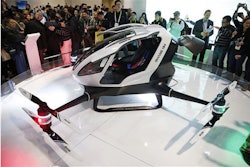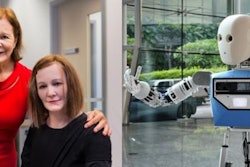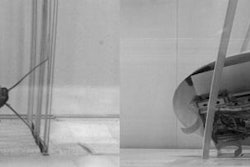The emergence of intelligent, networked devices — aka the Internet of Things (IoT) — promises major change in many aspects of business. IoT is already being applied in manufacturing, distribution and logistics to do such things as monitor the environmental condition of products during shipment, send an alert when factory equipment needs maintenance, and track the speed, safety, and fuel efficiency of trucks and their drivers. Manufacturers and other businesses that aren’t paying attention today will face tough competition from competitors tomorrow.
“Every day more sensors are being deployed in factories on motors to check vibrations and temperature, or on the factory line to measure production and product quality,” said Howard Heppelman, vice president and general manager for Connected Product Management at PTC, which makes an IoT platform. Heppelman, who spoke in a webinar, Creating a Winning IoT Strategy for Manufacturers, Logistics, and Service Providers, predicts that more advanced IoT applications will emerge — such as an augmented reality application that would let a factory manager walk the floor with glasses that overlays alerts and readings onto a 3D view of the same factory.
In his report, The IoT Impact: Finding Your Company’s Role in the New Smart Connected World, Bill McBeath, chief research officer for ChainLink Research, called the emergence of IoT technology a “tectonic” change that will alter many aspects of business, including the very structure of industries.
"We're entering the era of the IoT, which is enabling things like remote diagnostics or predictive diagnostics," McBeath said when he presented his findings in the Creating a Winning IoT Strategy webinar. "IoT is more than sensors. It includes substantial software components, not just in the device but up in the cloud. Internet connectivity takes things to a new level."
He foresees IoT applications that provide very precise tracking of orders and shipments, with alerts sent to the recipient if there are weather or traffic delays, or that monitor products’ temperature, vibration, or shock during storage or shipping and assigning risk factors to determine damage and liability. Maintenance may be conducted via the network as well, with fixes sent as software updates rather than technicians with a toolbox.
IoT devices leverage real-time data from sensors and existing back-office data from ERP, supply chain, CRM and other applications to produce useful information. There are virtually limitless possibilities for what smart chips might track and how it might be used in supply chain management, manufacturing, shipping, etc. The fact that PTC estimates there will be a trillion smart devices by 2035 is a good gauge of IoT’s future adoption.
Bigbelly Solar is an example of the disruptive potential of IoT. The Needham, Mass.-based company makes smart waste collection and recycling stations that run on solar power. The garbage bins come with trash compaction and volume sensors to help reduce the number of times they needed to be emptied and also prevent potential overflows. The bins are also WiFi enabled so data can be transmitted to a cloud-based management application. Its customers, which are U.S. and European cities, such as New York City, L.A., and Bath, England, as well as university and corporate campuses, access via a browser. That is a light year beyond the traditional, no-tech garbage bins that most cities still use, and heralds a potential upheaval in that industry.
Chips + Software + Internet = New Models for Manufacturing
The long-term effect of IoT on manufacturing and distribution will be huge, said McBeath. It will add intelligence to the factory floor, warehouse, and distribution process. It will also quickly become part and parcel of the products being traded. Physical products such as construction equipment, phones or shipping bins, once embedded with networked chips, gain the ability to provide services and be governed by SLAs. For instance, a factory might buy several industrial floor mats for the warehouse. The mats are equipped with tiny sensors to gauge wear and tear, and to send out alerts when it senses an impending failure of the mat. It could even order a replacement mat, depending on the SLA agreed to by the customer. Software-driven products like TVs or telephones could be serviced by a firmware update, saving the manufacturer a repair trip.
Businesses need to consider the impact of IoT technology on their organization and plan ahead now. That means evaluating existing products and services, markets, partners, and other aspects of the business, and thinking about the potential benefits that IoT could bring. McBeath recommends asking first what problems do customers have that could use a solution. Then determine what answers lend themselves to IoT. That will be the basis of an IoT roadmap, which must also consider the company's infrastructure, in-house R&D resources, its current business model, possible new markets and internal assets — such as customer data — that might be monetized.
He recommends that businesses move quickly: “The first move advantage exists in the accumulation of data, algorithms, customers, critical partnerships, critical masses of all these things. New unexplored territories and opportunities abound for those ready to take the leap and seize them."
Ranga Bodla is the Industry Lead for Wholesale Distribution at NetSuite.























